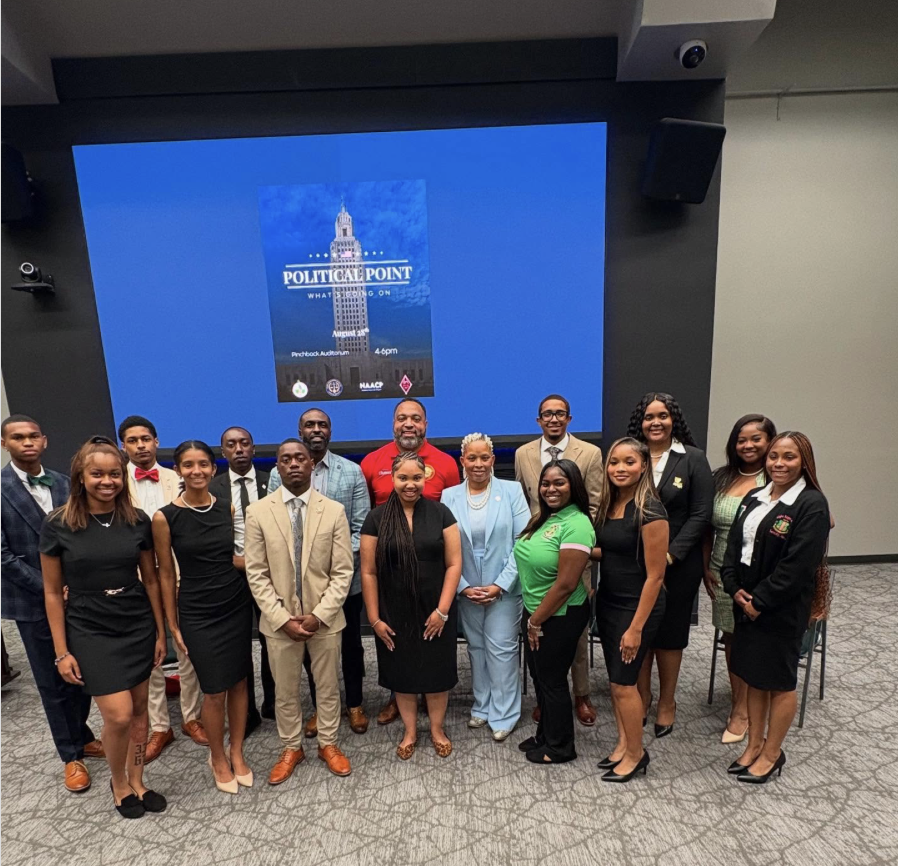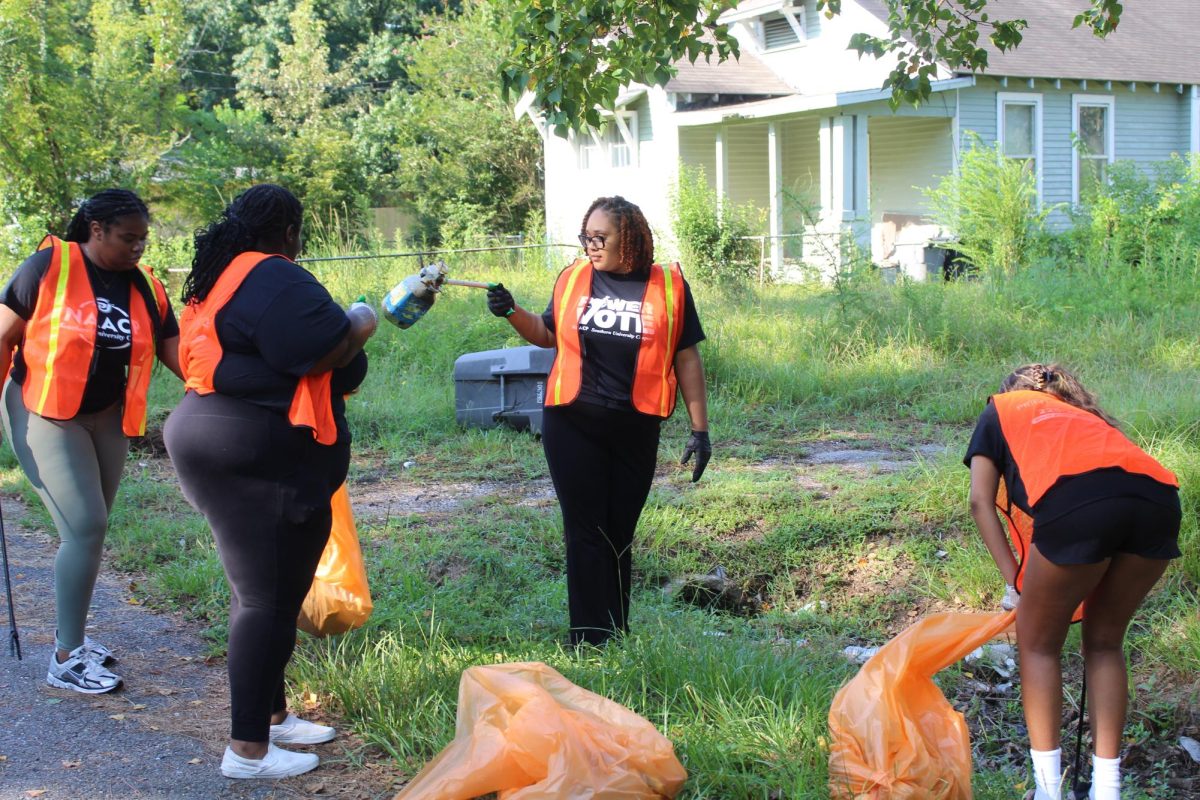The Southern University Department of Visual and Performing Arts, Speech and Theatre’s interpretation of Pulitzer Prize winner Susan-Lori Park’s play, “In the Blood”, gave audiences a mature, yet different take on the old stereotype of plays being boring.
Under the direction of Aileen Hendricks, associate professor of speech, theatre and English, “In the Blood” provided the audience with two hours of slightly entertaining yet morbidly vulgar situations, parallel to Nathaniel Hawthornes, “The Scarlet Letter.”
In the first scene entitled “Under the Bridge,” choruses of churchwomen stand outside of Hester La Negrita’s (played by Lashunda Thomas) and gossip about her life. The women talk about Hester’s five fatherless children, the poverty they live in and how she’s ruined her life.
Thomas’ portrayal of the fallen Hester — although her capacity to project the main character as a naïve woman giving herself to every man and woman who comes her way — is not memorable. The breakout star of the play is Nancy Lynch, who plays both daughter Bully and the Welfare Lady who convinces Hester into participating in sexual activities with her and her husband. Regardless of the Welfare Lady’s attempts to better Hester’s life by getting her needlework jobs, Hester cannot sew.
Even though the people in Hester’s life claim they are trying to help her, they are only harming her and her children. Amiga Gringa, played by Rebecca Henry, is Hester’s best friend. When Hester gives her a watch to pawn for money, Amiga comes back with less than five dollars, claiming that the market has declined. Hester has no choice but to accept and believe Amiga because she is illiterate and unaware of society’s current state.
The biggest blow to Hester’s life comes when the father of her eldest child, Jabber (Desmond Wilson), comes back into her life. Demetrius Warren plays Chilli, Hester’s first love. When Chilli professes his love for Hester and asks her to marry him, she accepts but does not tell him about her other four children. Once Chilli learns that Hester did not save herself for him, he takes back his marriage offer and leaves Hester with her children in poverty. In a dramatic ending, Hester becomes despondent about her conditions and kills one of her children.
Trying to find the connections between this modern day Hester and Hawthorne’s Hester will be a hard task. Although both works address single parenthood and society’s views toward unmarried mothers, “In the Blood” provides a mature and gritty look at the underbelly of society. Themes such as illiteracy, welfare, the role of the church, medical options for the poor, promiscuity and the role of fathers makes “In the Blood” a must-see for everyone who can appreciate a good plot with makeshift acting.
Categories:
Gritty ‘Blood’ good for the soul
March 3, 2006
0
More to Discover





